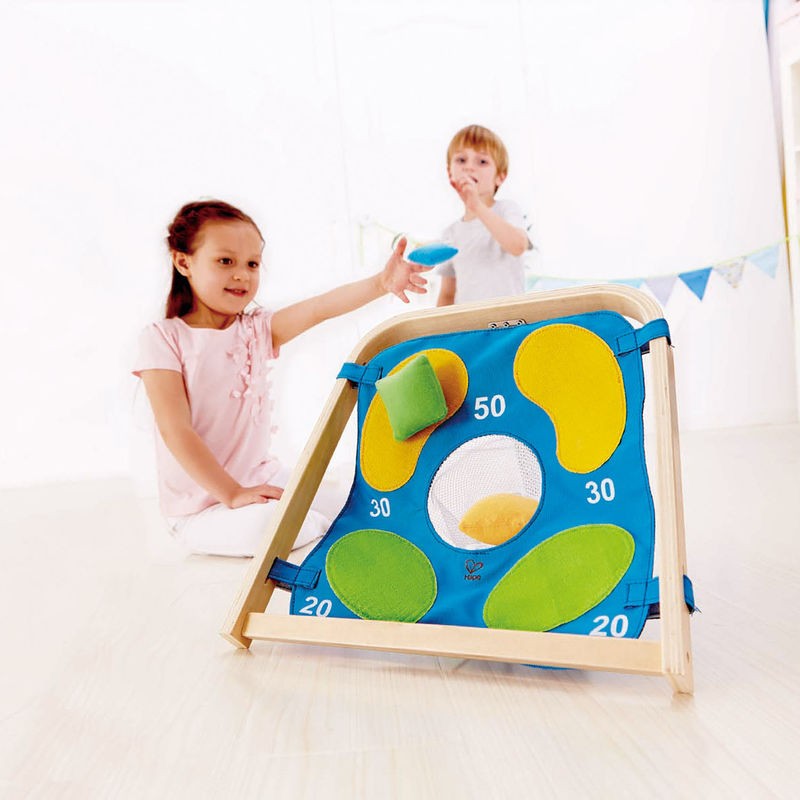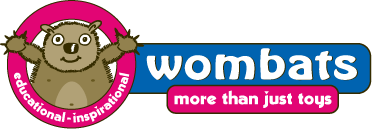The Role of Fine Motor Skills Toys in Your Child’s Development

The Importance of Playing with Fine Motor Skills Toys During Early Childhood
Playtime is more than your child having fun. It is also a time for them to learn and develop essential skills, including fine motor skills. Fine motor skills are vital in enabling them to perform various day-to-day tasks as they grow older. It is your role as a parent to provide your child with age-appropriate educational toys that are not only fun and safe to play with but are also designed specifically to help develop your child’s fine motor skills. Some examples of these educational toys are building blocks, a bead maze, and Melissa & Doug Primary Lacing Beads.
What are Fine Motor Skills?
Fine motor skills are also referred to as hand-eye coordination skills. This is because it involves moving smaller parts of the body, such as fingers and hands. Activities that enhance a child’s fine motor skills include balancing games, magnetic fishing games, and jigsaw puzzles.
It is important for your child to develop fine motor skills. These skills are essential in performing everyday tasks. It is by developing their fine motor skills that they will be able to brush their teeth, button their clothes, tie their shoelaces, eat using a spoon and fork, use a pair of scissors, and write notes. If these skills are not developed properly, your child will not be able to execute these simple everyday tasks. Consequently, your child may suffer from low self-esteem and poor academic performance.
What Your Child Learns from Fine Motor Skill Toys
It is when a child plays that they are able to make sense of their world and express their natural curiosity. The development of your child’s fine motor skills is an essential part of their growth and it requires using the small muscles in the fingers, hands, and forearms.
What are the benefits of playing with toys that are specifically created for the development of fine motor skills? Here are the things your child learns or develops as they play with a fine motor skill toy:
Performing Essential Tasks
As we develop fine motor skills, we are able to do the essential tasks of reaching, grasping, and moving objects, allowing us to control the things in our environment. It is with fine motor skills that we are able to do simple things, like buttoning our shirt or turning the pages of a book.
Using Tools Effectively
The Bionic Claw and Gator Grabber Tweezers are examples of educational toys designed to help develop a child’s fine motor skills. By playing with toys like these, a child will eventually be able to effectively use similar tools when they grow up. There are several tasks we find simple, like opening canned goods, slicing food, cutting paper, and performing plumbing repairs. But, without adequately developed fine motor skills, it would not be possible for us to successfully do these tasks.
Handwriting and Drawing Skills
Developing a child’s fine motor skills also involves their writing and drawing skills. As your child starts school, they will discover that both skills are important in their academic performance. Their ability to write and draw well affects how they will be perceived by their peers which, in turn, affects their their self-esteem.
Independence
As your child develops their hand-eye coordination and begins to have a better understanding of how they can use the things around them, they will start to be independent and try do a few tasks on their own. Some of these tasks would include simple grooming routines, such as brushing their teeth, bathing, and combing their hair.
Toys for Developing Your Child’s Fine Motor Skills
There are different activities and fine motor skills toys recommended for your child at every stage of their growth:
1-12 Months Old
At this early stage, sensory play is vital in stimulating your child’s senses. As your child continues to grow and develops hand-eye coordination, you can start introducing toys that encourage more interaction, such as things they can reach for, hold, suck on, shake, make noise with like rattles, large rings, squeeze toys, teething toys, soft dolls, textured balls, and vinyl and board books. Introduce problem solving toys as your child becomes more active, as these toys will help them become familiar with the concept of cause and effect, such as, “If I do this, then that will happen.” Examples of such toys are building blocks, maze, wind-up toys, and puzzles.
1-2 Years Old
As your toddler turns one, you will notice that they are able to control of their hands, fingers, and wrists better. This is the age when they begin to master the pincer grasp (picking up objects between thumb and forefinger). They will also be able to build a tower of blocks, cover and uncover boxes, catch moving objects like balls, turn knobs and pages, put round pegs into matching holes, take toys apart and put them back together, and make shapes from clay.
2-3 Years Old
Between the ages of 2 and 3, you will continue to see more refined movements from your little one and better control over their toys. You will also notice that they are starting to show a preference for their dominant hand. At this age, they are now able to hold pencils and crayons with their fingers and thumb rather than their whole hand. Encourage further hand-eye coordination with activities involving stacking pieces of different shapes and sizes, picture puzzles, and building blocks.
3-4 Years Old
Your child is now a pre-schooler, and they will be facing more challenging tasks at school. At this age, their small muscles may easily get tired from all the schoolwork and they might not have the patience to complete certain activities required of them in class. It is important that you pay close attention to your child’s interests and choose fine motor toys and activities that will keep them curious and entertained. Activity boards with a variety of different latches are ideal for motivating them to explore. Activity books are great for further enhancing their fine motor skills. And wooden figures that they can string together to tell a story are a good way to spark their creativity.
4-5 Years Old
Between the ages of 4 and 5, you will notice that your child has learned to manage many aspects of self-care and hygiene on their own. By the age of 5, you will see that your child has established their dominant hand and shows improved pencil control. You can motivate them to further enhance their fine motor skills by providing them with toys that will continue to challenge their hand-eye coordination and creativity, such as generic and themed building blocks, bead kits, and construction toys.
As adults, it is so easy for us to take for granted the things that we normally do on a regular basis. Daily routines like eating breakfast, preparing packed lunches, putting clothes on, brushing our teeth, combing our hair, putting socks on, tying our shoelaces – all these require fine motor skills which develop over several years from the time we are born. As parents, we are responsible for the development of our child’s fine motor skills. By providing them with appropriate educational toys, making these learning activities fun and enjoyable, and being patient as they discover what they can do, we help encourage and motivate them to get better at performing the things that they need to learn as they grow.





